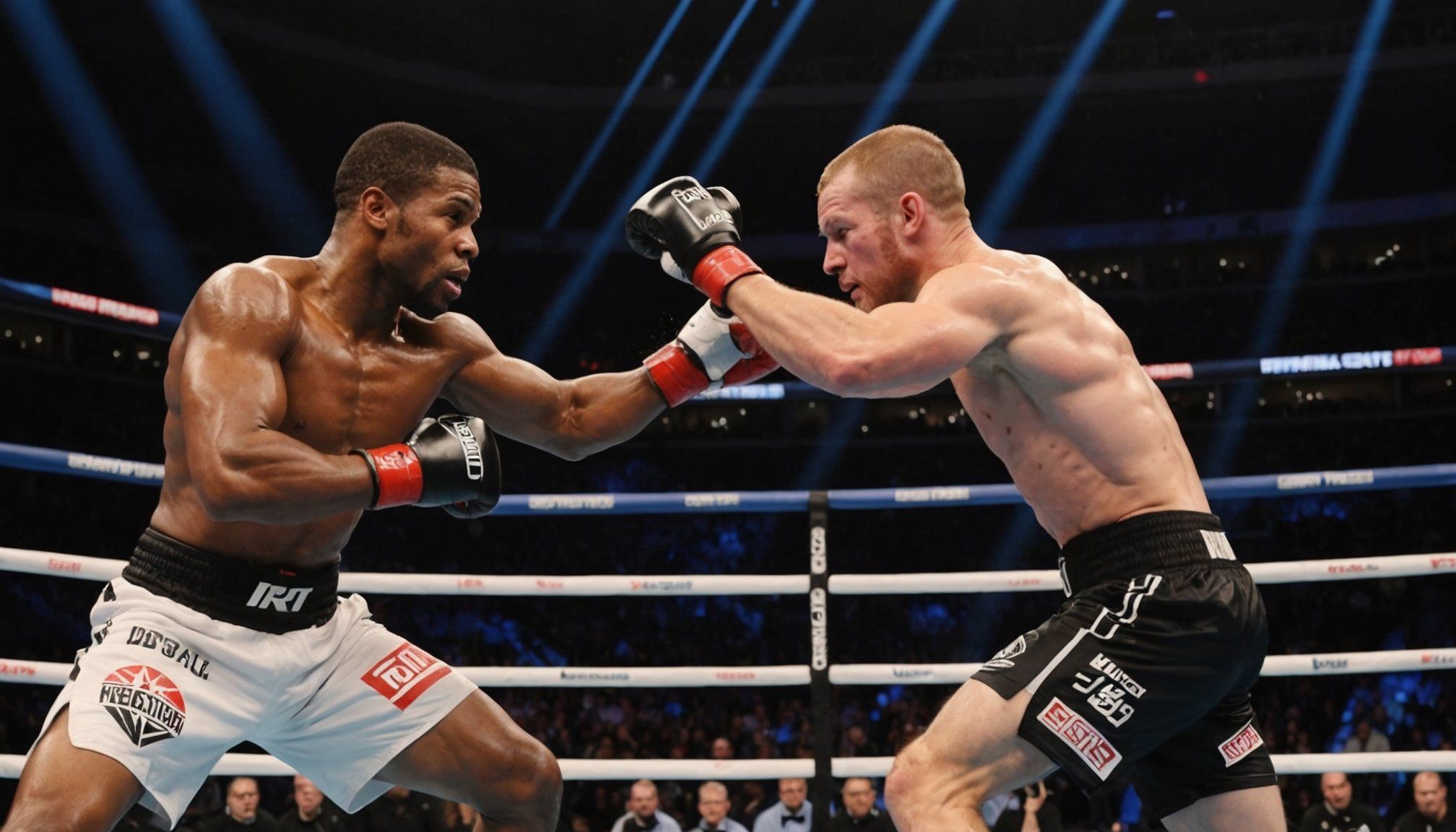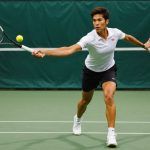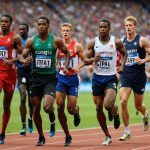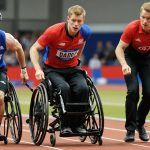In the electrifying world of combat sports, every split second counts. Whether you’re in the ring with a seasoned opponent or practicing in a gym, honing your reaction time can mean the difference between a triumphant victory and a narrow defeat. For practitioners of boxing, Muay Thai, and various forms of martial arts, enhancing reaction speeds is more than just a training goal—it’s a key component to mastering the art of combat. This article explores actionable strategies to improve your reaction time, offering insights into effective training techniques and exercises that fortify both your mind and body. Join us as we delve into the essentials of refining reflexes and maximizing speed in a way that can elevate your overall performance in the arena of sports.
Understanding Reaction Time in Combat Sports
Reaction time is a critical aspect of combat sports, influencing how quickly you can respond to an opponent’s movements. In essence, it measures the interval between recognizing a stimulus and executing a response. This seemingly brief moment is laden with complexity, involving sensory perception, neural processing, and muscular activation.
Additional reading : What effective strategies can be implemented for managing fight day nerves?
Combat sports demand rapid decision-making skills, where a fraction of a second can turn the tide of a match. Boxers dodge punches, Muay Thai fighters execute kicks, and martial artists counterattack—all reliant on sharp, honed reflexes. The goal is to reduce the time taken for the brain to process a threat and for the body to react, thus gaining a competitive edge.
Types of Reaction Time
- Simple Reaction Time: Involves reacting to a singular, straightforward stimulus. For instance, responding to a punch in boxing.
- Choice Reaction Time: Requires selecting the appropriate response among several options, such as deciding whether to block, dodge, or counterattack.
Enhancing your reaction time necessitates a blend of mental agility and physical conditioning. By understanding the intricacies of these responses, athletes can tailor their training programs to bolster both their cognitive and physical capabilities.
This might interest you : What are the key differences in strategy between amateur and professional MMA fights?
Training Techniques to Enhance Reaction Time
To elevate your combat game, incorporating specific training techniques focused on improving reaction time is paramount. A combination of mental and physical exercises can refine your reflexes, enabling you to anticipate and respond swiftly to an opponent‘s maneuvers.
Reaction Ball Drills
Reaction balls, with their unpredictable bounce, are instrumental in honing quick reflexes. These balls are used in a variety of drills aimed at improving hand-eye coordination and agility:
- Solo Drills: Stand a few feet away from a wall, throw the reaction ball against it, and catch it on the rebound. This exercise improves focus and enhances reaction speed.
- Partner Drills: Engage with a training partner who tosses the ball at random angles. Your task is to catch the ball before it hits the ground, refining both your anticipatory skills and reaction time.
Speed and Agility Drills
Incorporate speed-focused exercises that challenge your muscle response time:
- Ladder Drills: Utilize agility ladders to practice quick foot movements. These drills not only improve footwork but also help sharpen your body’s quick response mechanisms.
- Shadowboxing: Simulate combat situations by shadowboxing with an emphasis on speed and precise movements. This exercise builds muscle memory and sharpens reaction times.
Cognitive Training
Beyond physical drills, engaging the brain is crucial:
- Cognitive Apps: Utilize technology to your advantage. Apps designed to improve reflexes and quick decision-making can be integrated into your training routine, offering a modern tool to boost mental acuity.
Consistency and Progression
Consistency is vital. Regular training coupled with progressive difficulty ensures steady improvement. Gradually increasing the complexity of drills can prevent plateaus and continuously challenge your reflexes.
The Role of Reflexes in Martial Arts and Combat Sports
Reflexes are an athlete’s unsung hero, quietly underpinning every successful maneuver in combat sports. While strength and skill are tangible metrics of success, the ability to instinctively react to threats requires a different kind of mastery. This section explores how reflexes play an integral role in disciplines like Muay Thai and other martial arts.
Reflexes vs. Instincts
It’s important to distinguish between reflexes and instincts. Reflexes are immediate, automatic responses to stimuli, such as dodging a punch. Instincts, however, are learned behaviors that become ingrained over time, like anticipating an opponent’s next move.
Developing Reflexes
- Drill Variety: Diversify your training regimen with drills specifically designed to enhance reflexes. Incorporate reaction-based exercises that mimic combat scenarios.
- Sparring Sessions: Engage in regular, controlled sparring to apply your reflex training in practical settings. Controlled sparring allows for real-time analysis and adjustment of reflexive actions.
- Focus Mitt Work: Work with a trainer holding focus mitts to practice quick strikes and defensive maneuvers. This form of training demands both mental focus and physical reaction.
The Reflex Advantage
Competitors with finely tuned reflexes hold a significant edge. In high-pressure situations, they can act decisively without hesitation, maintaining composure and adaptability. Reflex training not only enhances defensive capabilities but also allows for strategic offensive opportunities, ensuring that athletes remain a step ahead of their adversaries.
Integrating Speed and Strength for Maximum Performance
While rapid reaction times are crucial, coupling them with strength and speed can elevate your performance to new heights. It’s not simply about reacting quickly—it’s about executing responses with power and precision. This fusion of elements is what separates elite athletes from the rest.
Building Explosive Power
-
Plyometrics: Incorporate exercises such as box jumps and clapping push-ups to build explosiveness. These workouts enhance muscle contractions, allowing you to deliver powerful strikes with minimal delay.
-
Resistance Training: Strengthen your muscles with targeted resistance exercises. Focus on compound movements like squats and deadlifts that recruit multiple muscle groups.
Speed Enhancement
-
Interval Training: Engage in high-intensity interval training (HIIT) to boost overall speed. Short bursts of intense activity followed by rest periods condition your body to perform at peak levels.
-
Sprint Drills: Sprints improve cardiovascular endurance and explosiveness, both of which are essential for sustained performance in combat sports.
Synchronizing Speed and Strength
Achieving harmony between speed and strength involves:
- Balanced Workouts: Design training sessions that integrate both speed and power exercises.
- Recovery: Allow time for muscle recovery to prevent fatigue and facilitate growth.
The Competitive Advantage
By synchronizing speed with strength, athletes can maintain relentless pressure on opponents, executing decisive actions with both velocity and force. This holistic approach ensures that you are not only fast enough to react but also powerful enough to dominate.
Cultivating swift and effective reaction times is indispensable in the realm of combat sports. By integrating training techniques that target both mental and physical agility, athletes can significantly enhance their reflexes. Whether through drills with reaction balls, speed and agility training, or cognitive exercises, the journey to improved reaction times is multifaceted.
Combat sports demand more than just strength or skill—they require a keen sense of timing and a sharp reflexive response. By embracing a comprehensive approach that combines speed, strength, and reflex training, you equip yourself with the tools needed to face any opponent with confidence and prowess. As you refine your techniques, remember that every split second gained contributes to achieving excellence in the intriguing world of martial arts and combat sports.











